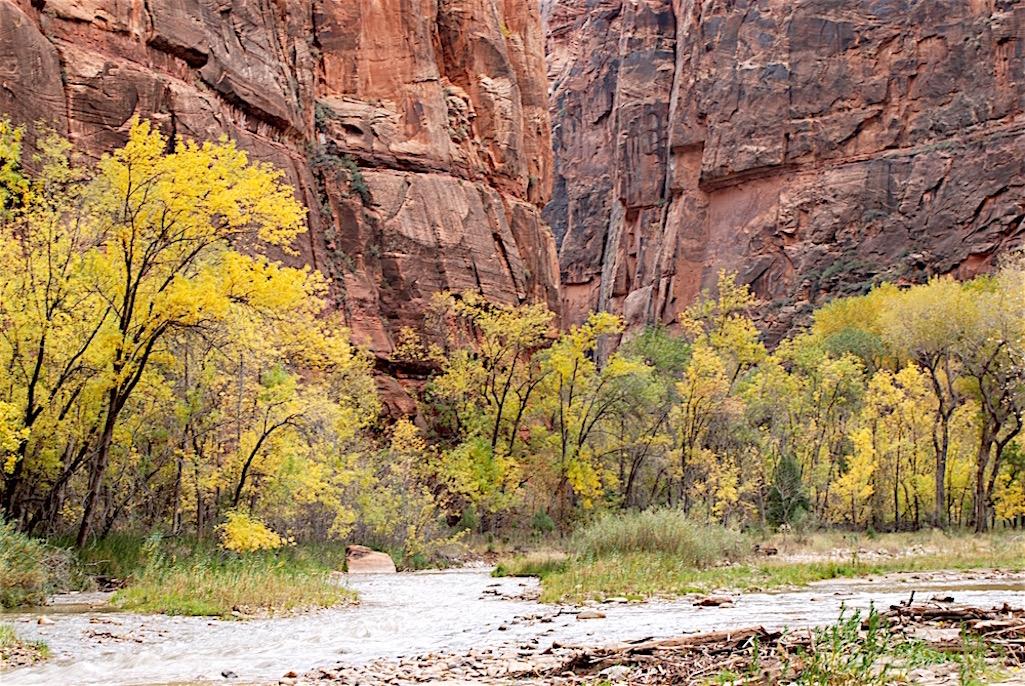
Zion National Park has struggled with cyanobacteria blooms in sections of the Virgin River/Kurt Repanshek file
Scientists from the U.S. Geological Survey and National Park Service are collaborating on a national study of harmful algal blooms, or HAB, that will continue into 2023.
HABs are a global concern that threaten human and aquatic ecosystem health and can cause severe economic damages. Algal toxins are produced by certain species of algae and microscopic water plants called phytoplankton and can cause acute and chronic illnesses in humans and wildlife. Economic damages related to HABs include loss of recreational and fisheries revenues, decreased property values and increased drinking-water treatment costs.
The researchers involved in the project -- Rapid Response Strategy for Potential Toxin Exposures from HABs in Coastal and Shoreline Areas of National Parks -- aim to address critical management needs related to HAB monitoring and response in national parks.
Professional and trained citizen scientists are using innovative techniques to sample and monitor HABs in freshwater and marine environments across 18 national parks. The new suite of simple, low-cost sampling methods can analyze up to 32 freshwater and 25 marine algal toxins.
“We are very excited about this multi-agency collaborative effort,” said Jennifer Graham, USGS project co-lead. “The end goal is to provide the information necessary for the National Park Service to develop comprehensive guidance on HAB monitoring, toxin testing and rapid response protocols."
“We’re finding HABs in new areas,” said Jamie Kilgo, project co-lead and marine ecologist at the NPS. “We need to monitor areas where they are a known issue and anticipate where we might find them in the future so we can protect visitors, pets, park staff, volunteers and wildlife.”
Scientists selected six marine and 12 freshwater parks with recurring HABs and potential human or wildlife health issues for the program. Over the summer, the agencies trained NPS technicians and 11 citizen scientists to safely monitor and collect water samples for further analysis so the USGS and partners can efficiently identify the presence of potential HABs.
These groups are using a variety of sampling and monitoring techniques to test their efficacy. These techniques range from citizen scientists viewing phytoplankton species under a microscope to colorful, donut-shaped Solid Phase Adsorption Toxin Tracking tools, which track toxin presence over time. Scientists will sample for more than 30 different toxins, some of which are rarely tested for but may be present at harmful concentrations.
“It’s important that we cover this wide range for both the toxins and sites in order to fully understand the extent of harmful algal blooms,” said Victoria Christensen, USGS project co-lead. “Therefore, we are also sampling a diverse range of waterbodies, such as rivers, lakes, coastal shorelines and backwater areas, that may harbor different types of blooms and different toxins.”
Collaborators, including the U.S. Environmental Protection Agency Cyanobacteria Monitoring Collaborative, the University of Wisconsin and NOAA’s Phytoplankton Monitoring Network, will supply equipment and protocols for low-cost HAB monitoring and toxin sampling needed for analyses in selected pilot parks.
The Park Service release detailing the study did not identify the parks involved.



Add comment